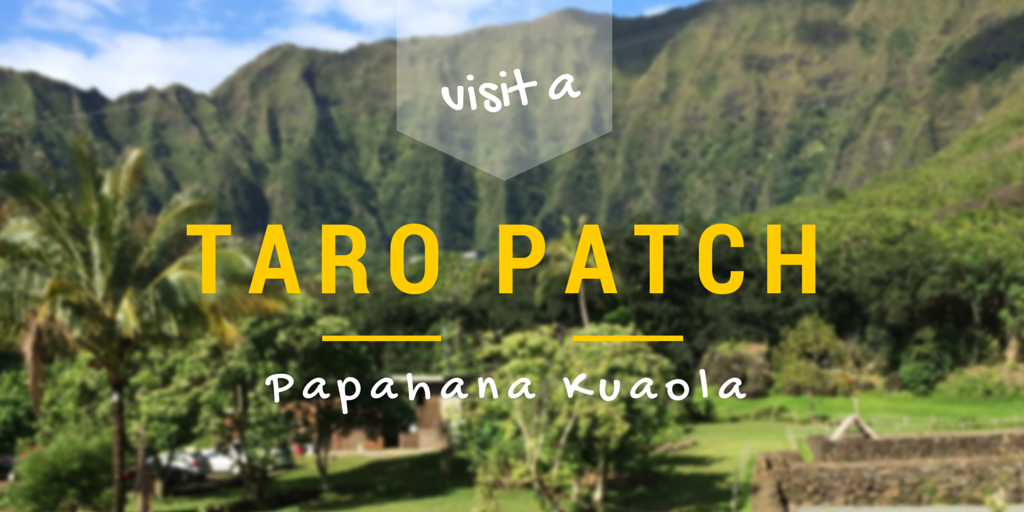
Today we traveled to the windward side of the island to spend the day with our Aunty Ana who works at Papahana Kuaola, a non-profit organization dedicated to preserving the natural beauty and culture of Hawai’i. We were special guests and had been invited to learn about the importance of taking care of our ʻāina (land).





Our first visit was to a “Hale Pili” (traditional Hawaiian home) that is built on an elevated stone platform (called a paepae).
The house is made of up durable Hawaiian woods (such as naio). The hale was then thatched over with thick pili grass and lashed with cordage made from the ’uki’uki (a member of the lily family). A layer of grass covered over with lauhala mats formed a clean floor.


While such “grass houses” were not meant to last more than five years, they were well able to protect the families from the wind and rain. The only surviving example of an authentic grass house in Hawai’i today is the “200-year-old” hale pili (built sometime before the 1800’s); restored and exhibited on the first floor of the Hawaiian Hall, Bishop Museum.
While making our way to the lo’i, there were several preschools and a Hawaiian immersion school visiting the property. All of the children looked excited and eager to learn about our “ʻāina” and “kalo” (taro plant), which is still a food staple in Hawaii and plays and important role in Hawaiian culture and mythology.


“Kalo”, is the Hawaiian name for the taro plant. It is one of the earliest cultivated plants and was the most important crop to the Hawaiian people. Produced in large numbers with different cultivated varieties. Our aunty wanted us to learn about “Kalo” and its importance to the Hawaiians.
Our Aunty then told us we would be cleaning a lo’i (taro patch) of our own, preparing it so we could plant kalo in it one day.




Aunty Ana explains that maintaining a lo’i is hard work! Making sure the waterways are clear of debris so it can flow through properly, constantly removing weeds and making sure each embankment holds strong and surrounding areas are kept well and groomed are key to a good kalo patch.




With the resurgence of Hawaiian culture, many people have participated in the restoration of lo‘i around the islands. More and more children are getting involved to learn about their relationship to the ʻāina and each other.





After cleaning the lo’i, Aunty Ana took us on a tour of the grounds and we walked up to the fresh water stream to go for a swim.



We learned about different types of plants on our way up to the stream.







After our swim it was time to go! Aunty Ana had a big group of high schoolers coming to Papahana Kuaola to learn about environmental restoration and economic sustainability.
As we made our way back to the car the kids decided they want to come back again and plant the kalo in the lo’i we cleaned out today. They learned a lot about their Hawaiian culture, native plants and most of all loved the lo’i kalo experience.
Papahana Kuaola has many activities that are focused towards educating students from preschool onwards. They will work to meet the needs of each school, organization or group. Different programs for kids include;
- “Letʻs Get Muddy!”: loʻi kalo experience: Hawaiian connection to kalo, ancestor Hāloa
- ʻĀina ʻO Waipao: a holoholo tour of the loʻi kalo (taro patches), native gardens, streams and forest.
- Sense of Place: ahupuaʻa, land divisions, moʻolelo, wahi pana
- Hawaiian Spirituality: world view, kinolau (forms of gods)
- Hawaiian ethnobotany/ethnobiology: implements & tools- show, touch & tell
- Native plants and animals: how did they arrive, native vs. non-native/invasive species
- Residents of Waipao: The crawlers, swimmers, wrigglers and winged ones
What a wonderful experience, we look forward to spending our entire summer here!
To arrange a group visit call Papahana Kuaola and ask for “Aunty Ana”! 🙂
Panahana Kuaola
Kaneohe, Hawaii
Contact: Ana Kon, Kupualau, Engagement Specialist
Telephone: (808) 447-7694
Email: akon.waipao@gmail.com
www.papahanakuaola.com



Pingback: Easy Kid-Friendly Spam Musubi Recipe - Pint Size Gourmets